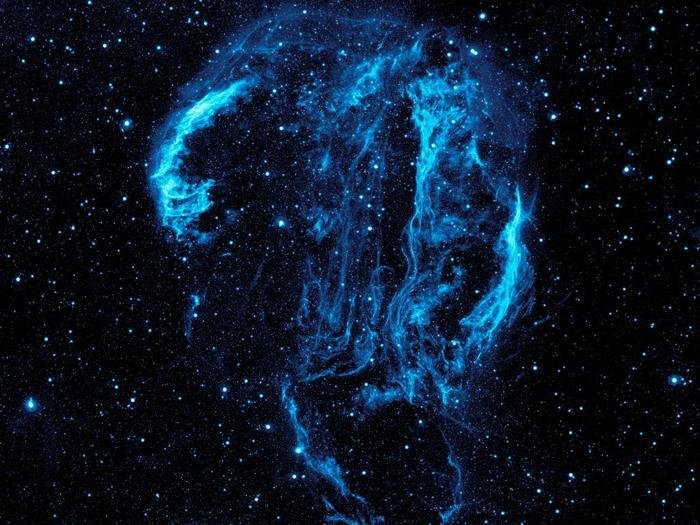Wispy tendrils of hot dust and gas glow brightly in this ultraviolet image of the Cygnus Loop nebula, taken by NASA’s Galaxy Evolution Explorer. Credit: NASA
PASADENA, Calif., June 28 (UPI) -- NASA says it's pulled the plug on a veteran space telescope after 10 years of observing hundreds of millions of galaxies across 10 billion years of cosmic time.
Operators at Orbital Sciences Corp. in Dulles, Va., sent the shutdown signal to decommission the Galaxy Evolution Explorer at 3:09 p.m. EDT Friday, NASA's Jet Propulsion Laboratory in Pasadena, Calif., reported.
"GALEX is a remarkable accomplishment," Jeff Hayes, NASA's GALEX program executive in Washington, said. "This small Explorer mission has mapped and studied galaxies in the ultraviolet light we cannot see with our own eyes, across most of the sky."
Launched in 2003, GALEX will remain in orbit for at least another 65 years before falling to Earth and burning up upon re-entering the atmosphere, NASA said.
GALEX met its prime objectives and the mission was extended three times before being finally decommissioned, the space agency said.
In its last year in operation, it scanned large patches of sky, including the bright center of our Milky Way, finding exploded stars called supernovae and monitoring how cosmic regions such as the centers of active galaxies change over time.
"GALEX, the mission, may be over, but its science discoveries will keep on going," said Kerry Erickson, the mission's project manager at JPL, noting data from the last year of the mission will be made public in the coming year.















